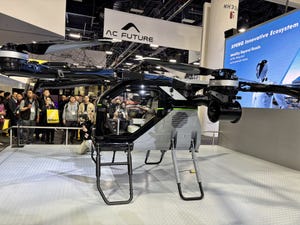Self-Driving Taxi Runs Into JaywalkerSelf-Driving Taxi Runs Into Jaywalker
A Baidu self-driving taxi collided with a pedestrian still crossing the road when the traffic light turned green

Who is to blame when an autonomous vehicle (AV) collides with a jaywalker?
That’s been a topic of debate on Chinese social media over the past couple of days following an incident in the central city of Wuhan, in Hubei province, over the weekend.
Baidu confirmed to local media that a self-driving taxi, which operates via its Apollo Go ride-hailing arm, had minor contact with a pedestrian who was still crossing the road when the traffic lights had already turned green.
Images on X show the aftermath of the collision, with the pedestrian sitting upright at an intersection, apparently unhurt, adjacent to the Apollo Go AV.
The individual was taken to hospital for examination and was found to have no obvious external injuries, although it is understood that he was detained for observation.
Despite the lucky escape, the incident has again brought into sharp focus the debate over whether automated driving technology is scaling too quickly in China.
It’s a particularly timely discussion, given that a few days before the incident, Baidu, Auto X, SAIC and Pony.ai were announced at the World Artificial Intelligence Congress as the first recipients of permits for public driverless taxi operations in Shanghai, adding to the growing list of Chinese cities which accommodate unmanned cabs.
To some, the Wuhan incident is proof that although the technology has made significant strides, there is still some way to go before it can cope with unexpected situations and scenarios, particularly when other road users do not comply with rules or regulations.
However, monitoring of Chinese social media by the Shanghai Daily outlet revealed that most users expressed support for Baidu in this instance, given that the pedestrian had broken traffic laws.
Although Baidu has added Shanghai to the list of cities it is now able to operate in without drivers – which also includes Shenzhen and Beijing – it is arguably Wuhan which is its key hub in China at present.
The company already deploys hundreds of self-driving taxis in the city – home to more than 11 million people – operating in an area covering 1,158 square miles, including Wuhan Tianhe International Airport.
In May it confirmed plans to expand even further – taking that tally to around 1,000 AVs later this year – with the arrival of its new RT6, which is claimed to cost around half the price of its predecessor to build, at $27,700.
This has sparked confident talk from Baidu that Apollo Go will reach profitability in 2025, the first autonomous ride-hailing service in the world to do so.
About the Author
You May Also Like








